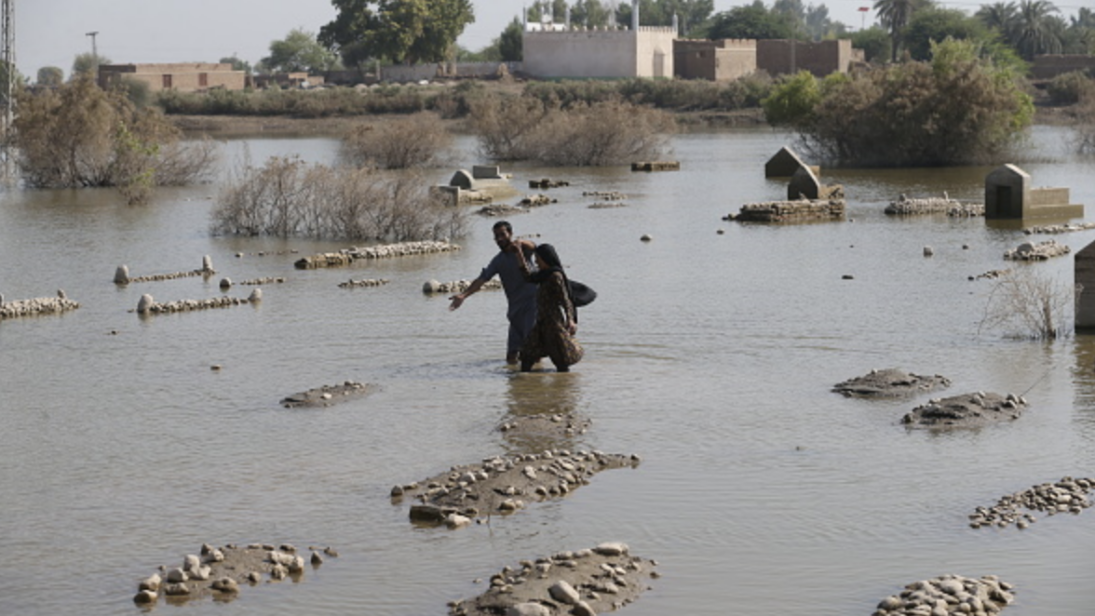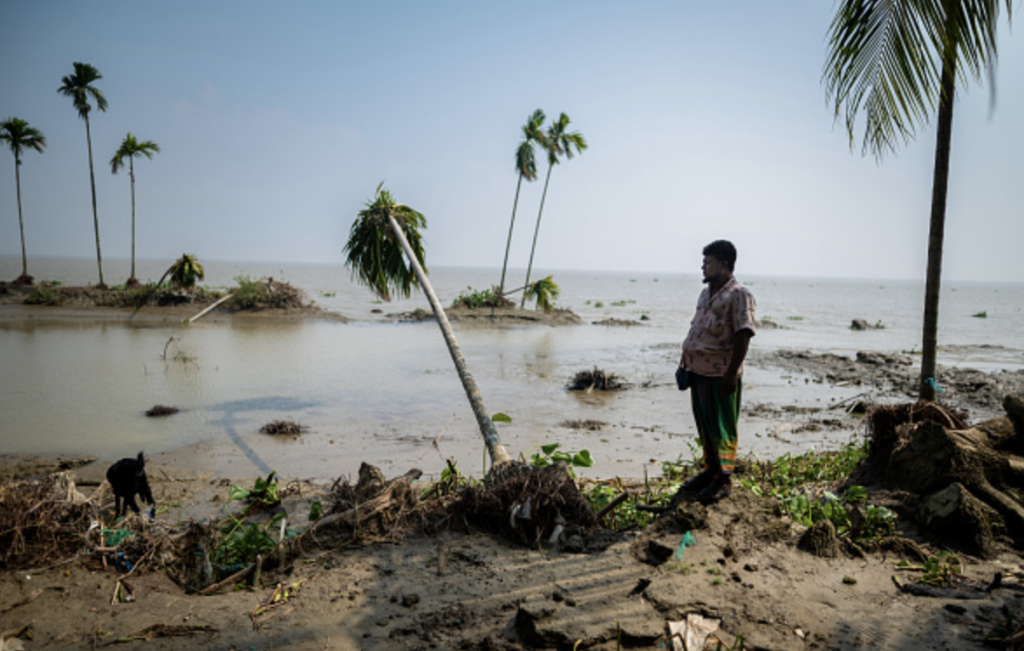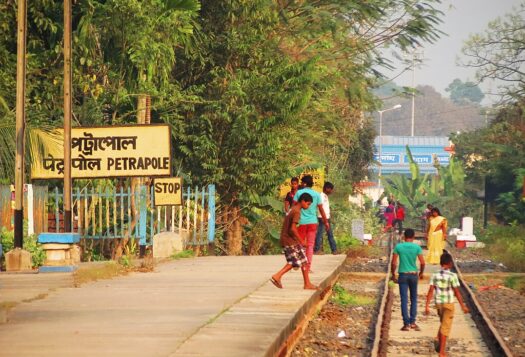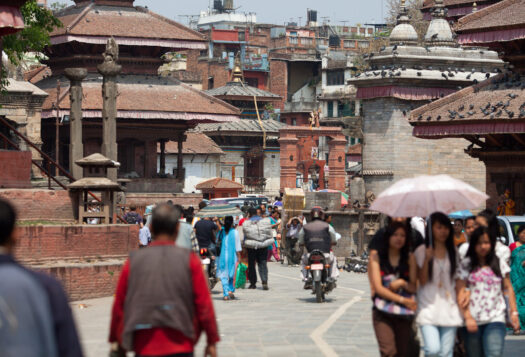
Unprecedented floods in Pakistan in recent months, caused by a mix of record rainfall and melting glaciers, left a third of the country submerged under water and affected nearly 33 million people. The floods have also caused widespread destruction, with crops as well as private and public infrastructure destroyed. The country now faces humanitarian and health crises. Its government estimates that resulting losses may be as high as USD 40 billion; reconstruction will be a herculean task for this developing country, which was already struggling economically.
This is only one of several extreme climate events to afflict South Asia this year. After Bangladesh earlier this summer, Nepal is now battling floods and landslides. India and Pakistan also suffered a record-breaking heatwave, which started earlier and lasted longer than usual. In addition to destroying crops, it also caused electricity shortages and drought. Unfortunately, these events are only early indicators of what South Asia must prepare itself for in the coming years. Climate change has already become an existential crisis for this heavily populated region.
A Disaster-Prone Region on the Frontlines of Climate Change
By one estimate, the Indo-Pacific is four times more likely than Africa to be affected by natural disasters, and 25 times more likely than Europe. South Asia is a particularly disaster-prone region, as climate-related hydrometeorological disasters such as floods, storms, heatwaves, and droughts are becoming more frequent and more severe in the region. These, in turn, increase water scarcity, food insecurity, and poverty, and often result in health crises. Apart from the severe human costs of these weather disasters, countries in the region will also face massive economic costs. According to one report, rising heat and humidity could reduce India’s GDP by about 2.5-4.5 percent by 2030, equivalent to roughly USD 150-250 billion.
South Asia is a particularly disaster-prone region, as climate-related hydrometeorological disasters such as floods, storms, heatwaves, and droughts are becoming more frequent and more severe in the region.
A recent report by the Asian Development Bank estimates that natural disasters displaced people 221 million times between 2010-2021 across the Asia-Pacific, including 5 million displacements by cyclone Amphan alone in South Asia in 2020. In 2021, there were nearly 5.3 million internal displacements in the region due to disasters, of which 4.9 million were in India. This year’s numbers will undoubtedly be much higher, and the number of people exposed to natural disasters is increasing by about 3.5 percent each year.
Climate change is also increasing internal migration. As some areas become harder to live in due to water scarcity or sea level rise, and economic opportunities become scarcer, people move to other areas in search of a better life. Unless adequate action is taken urgently, there may be as many as 40 million internal climate migrants in South Asia. Often people move to major cities in search of economic opportunities. Unfortunately, this will further burden megapolises like Delhi and Mumbai, which already suffer from poor infrastructure, increasing pollution, and environmental degradation.
Improve Policy and Preparedness
South Asian countries have made some efforts to prepare for certain disasters in the aftermath of major ones, such as cyclones in the case of Bangladesh and earthquakes in the case of Pakistan. However, continuing population growth and urbanization are increasing population density in disaster-prone areas. For example, an estimated 246 million people are expected to live in cyclone-prone areas by 2050. Early warning and evacuation can reduce fatalities, although the risk to private property and public infrastructure remains high.
In addition to developing domestic disaster preparedness and relief mechanisms, it is critically important to improve domestic policy-making — especially in urban planning. Poor infrastructure and urban development that disregards the local ecology exacerbate many problems. Anyone who has spent time on India or Pakistan’s flooded streets during the monsoon season can testify that drainage systems have not received adequate attention from the countries’ planners. Planning must become mindful of the local environment and avoid exacerbating concerns like water scarcity, landslides, and urban flooding, and ensure that further development is both climate adaptive and resilient.
Along with domestic efforts, South Asian countries must also seriously invest in multilateral humanitarian assistance and disaster relief mechanisms. Ecological and geographical continuities in the region mean there is a compelling case for regional cooperation. However, despite much talk, this is currently sorely lacking.
The Indian Ocean Rim Association (IORA) recognizes the region’s susceptibility to both natural and manmade disasters and identifies disaster risk management as a key priority. However, it excludes Pakistan and Myanmar. The organization’s website lists developing disaster risk management as a priority area under the IORA Action Plan 2017-2021, and tasking a Core Group chaired by India for two years with formulating a Work Plan for enhancing cooperation and developing resilience in the region. However, whether such a Work Plan was developed is unknown, and the organization is yet to release a new Action Plan.

Likewise, not much can be said of the South Asian Association for Regional Cooperation’s (SAARC) efforts in this area. Although the association’s summits have repeatedly stressed the importance of intensifying regional cooperation to preserve regional ecosystems and address climate change and natural disasters, little has been done by way of implementation for a decade now. The Association signed the SAARC Convention on Cooperation on Environment in 2010, which was ratified by all members and entered into force in October 2013. It identified 19 areas for cooperation; a Governing Council comprising the environment ministers of member states was tasked with implementation.
Similarly, the Thimphu Statement on Climate Change, also adopted in 2010, outlined initiatives to address the effects of climate change and established an Inter-governmental Expert Group on Climate Change to help facilitate implementation. This Group is supposed to report to the SAARC environment ministers. However, the member states’ environment ministers have not met since 2011, suggesting that these efforts, like the Association itself, are all but defunct.
Build a coalition at the international level
Multilateral agencies have delivered early support to Pakistan and launched donation efforts. Early in October, the UN raised its call for funding to help the country recover from the floods to USD 816 million. While these funds would be nowhere sufficient to cover the total losses the country has to bear, even this amount may prove difficult to mobilize. The UN has so far received only USD 90 million in response. In September, the World Bank said it is envisaging support of about USD 2 billion to aid various rehabilitation and reconstruction efforts. The Asian Development Bank has committed up to USD 2.5 billion.
Support from wealthy economies has been mixed. In contrast to the US (USD 66 million), China (USD 59 million), and the UK (USD 30 million), the EU has only provided about USD 2.28 million. Aid from other major economies is less clear. While countries like Germany provided rapid assistance and immediate food aid, it will take years to recover from the widespread devastation. Pakistan will need sustained aid once it begins reconstructing after the immediate humanitarian crisis is dealt with; it is not yet clear how much support it will receive during the later phase.
South Asia’s struggles with climate change are only going to get worse in the coming years. As extreme climate events become more frequent and severe, the costs of responding to and recovering from them are also going to grow. Countries in the region will find it increasingly difficult to shoulder these costs as the loss of GDP due to these disasters will further reduce their economic capabilities. The region not only faces mounting human costs and insecurity but also a slide back into poverty for millions and a rollback of hard-won developmental gains of the past few decades.
As the costs of recovering from extreme climate events increase in the future, it is unclear how willing wealthy economies will be to continue supporting developing economies, especially as they also begin to face the consequences of climate change. Unfortunately, developing countries may find themselves increasingly alone in shouldering these burdens. On the global level, they must now collaborate to hold wealthy countries to their promises of delivering the climate finance they have promised so far and press for developing financial mechanisms to aid recovery and reconstruction at the upcoming COP27 meetings.
South Asian countries would do well to finally set aside their mutual animosities and start developing transnational and regional mechanisms to adapt to climate change and recover from disasters.
Global South countries have long been vocal about the historical responsibility of industrialized countries in causing global warming. It was their successful efforts in the past that helped enshrine the principle of Common But Differentiated Responsibility in the 1992 UN Framework Convention on Climate Change (UNFCCC). Despite committing to jointly mobilize USD 100 billion per year by 2020, developed countries continue to fall short of that goal.
Fraught relations between countries in South Asia have held back bilateral relations and multilateral institutions for too long. But the political leadership of all countries in the region must recognize and accept that the existential challenges posed by climate change are far more important than persistent ideological rivalries and territorial squabbles. Seven decades of hostility is plenty. South Asian countries would do well to finally set aside their mutual animosities and start developing transnational and regional mechanisms to adapt to climate change and recover from disasters.
Editor’s Note: A version of this piece was originally published on 9DashLine, and has been republished with permission of the editors.
***
Image 1: Muhammed Semih Ugurlu/Anadolu Agency via Getty Images


